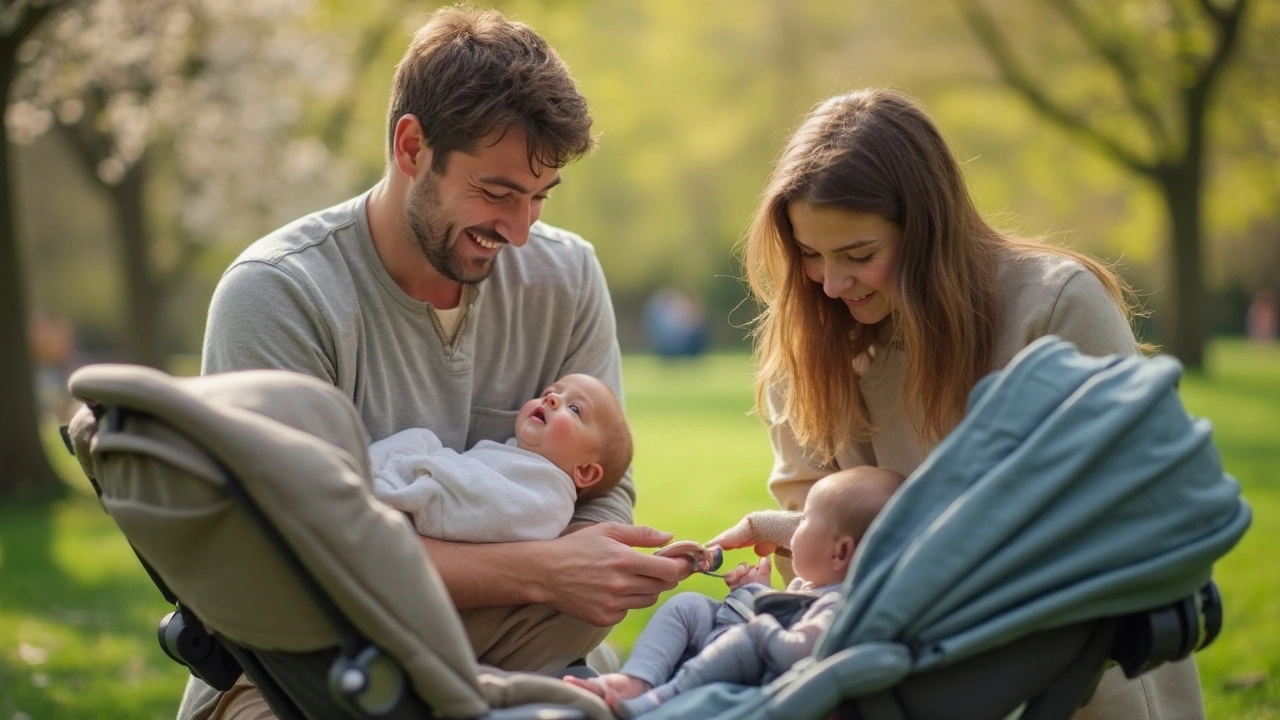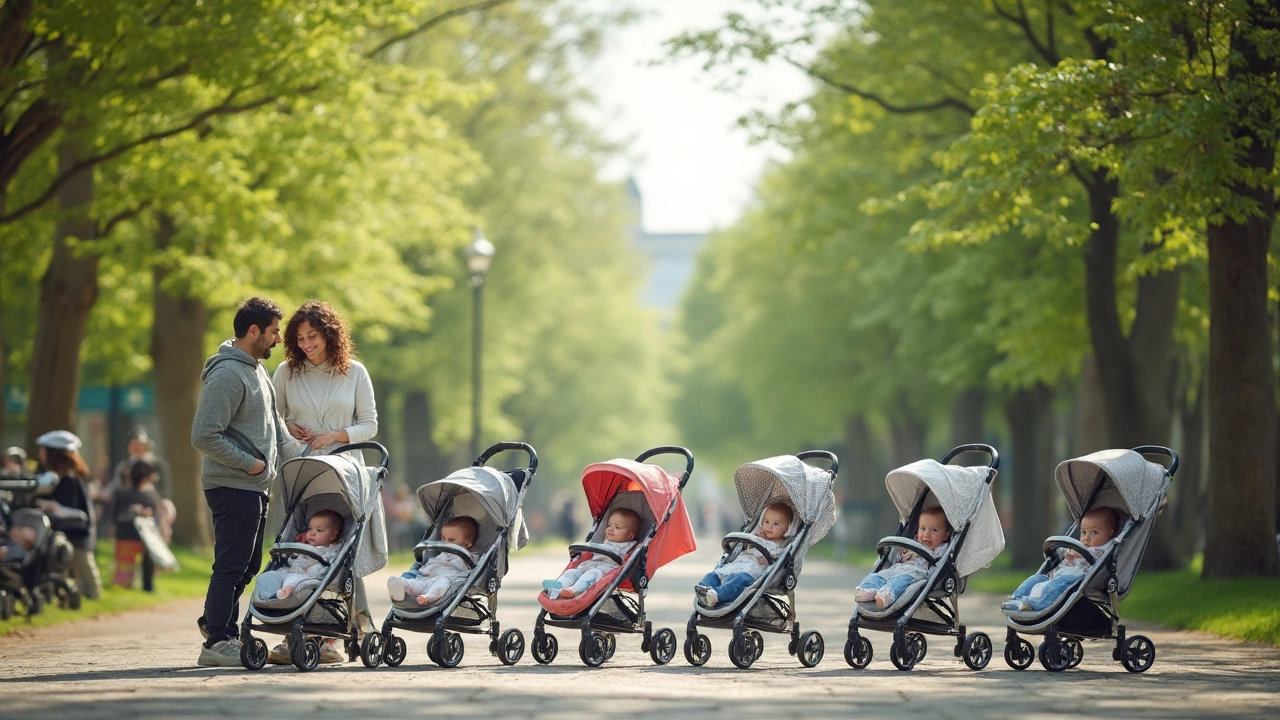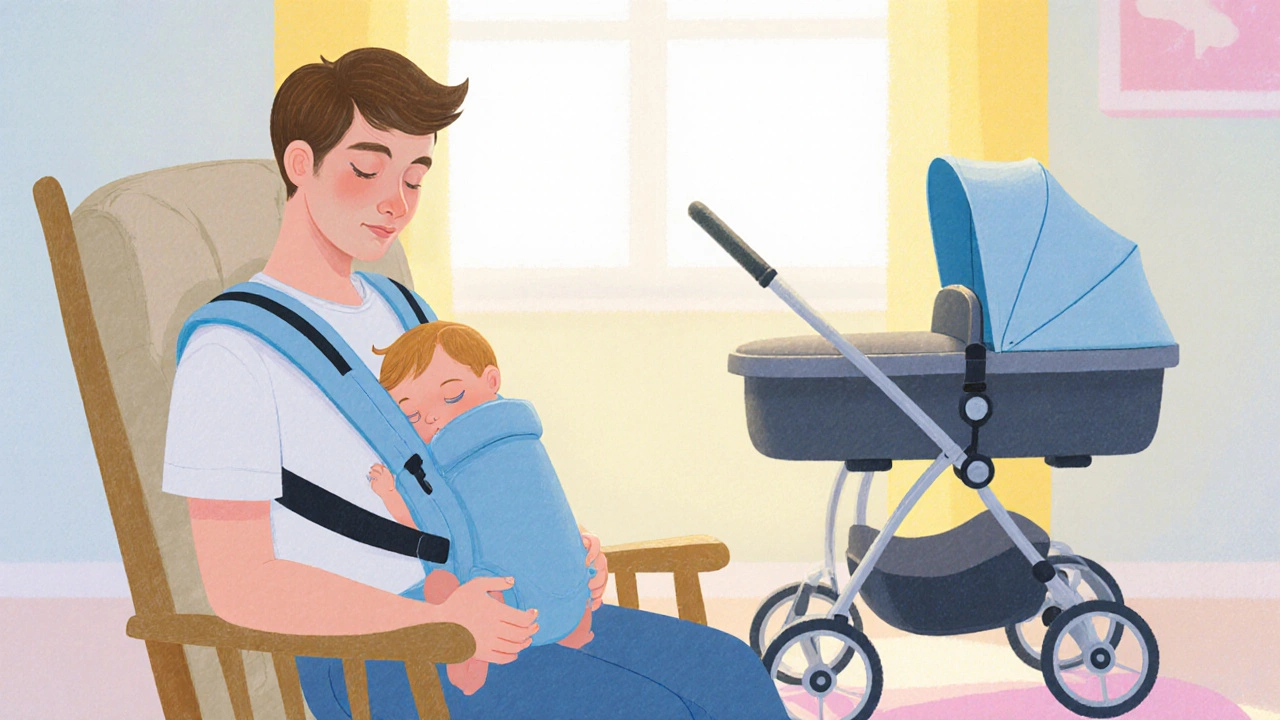Choosing the Perfect Newborn Stroller: A Beginner's Guide

When you're expecting a newborn, choosing the right stroller can be one of the most exciting yet overwhelming tasks. With so many designs and features on the market, it's crucial to understand what will best fit your family’s needs. From lightweight models for portability to robust options for rugged terrain, each stroller has its charm and utility.
In this guide, we'll navigate through the various types of strollers available, key safety features to look out for, and how to ensure maximum comfort for both you and your little one. Whether you're a city dweller needing nimble wheels or a countryside walker craving sturdy stability, our insights will steer you towards the ideal choice.
- Understanding Newborn Stroller Types
- Safety Features Every Parent Needs
- Comfort and Usability for You and Baby
- Navigating Different Terrains with Ease
- Top Tips for Making the Right Choice
Understanding Newborn Stroller Types
Choosing the right stroller for your newborn is akin to picking the perfect pair of shoes; it should be comfortable, durable, and stylish to suit your lifestyle. Let’s dive into the myriad of newborn stroller options available that emphasize convenience and safety, ensuring a smooth ride for your baby. An important aspect to consider when selecting a stroller is the weight, as you will need to navigate every day not only with your baby but also with this piece of equipment. Many parents opt for lightweight models that are easy to fold and transport. However, heavier models often offer more stability and features, perfect for those who prioritize functionality over portability.
The traditional full-sized stroller is a favorite among many parents. These strollers offer ample space for storage, which is a significant advantage when you're carrying extra diapers, bottles, or toys. They often come with adjustable handlebars and multi-position reclining seats, making them exceptionally versatile for newborns. If you are someone who loves to take long city walks or country strolls, a full-sized stroller might be the ideal pick. The sturdy build ensures long-term use and often includes accessories like cup holders and trays.
On the other hand, travel systems are quintessential for those who are frequently on the move. These combine an infant car seat with a stroller base, allowing you to easily transfer your little one from car to stroller without disturbing their sleep. It's particularly useful for newborns, as it ensures seamless transitions when you're running errands or visiting friends. A quote from James Andrews, a renowned child safety expert, highlights this,
"A travel system offers unparalleled convenience for parents who cherish simple transitions between car and stroller, significantly decreasing the hassle when managing a newborn."
For parents of multiples, twin or tandem strollers are the go-to option. These strollers provide side-by-side or one-behind-the-other seating arrangements. The design of these strollers eliminates the need for multiple separate strollers, promoting ease of movement with more than one child. Some might worry about navigating tight spaces with a wider stroller, but many come equipped with swivel wheels that enhance maneuverability.
A more recent innovation is the jogging stroller, designed for active parents who don’t want to compromise on exercise. With larger wheels, durable frames, and shock absorption systems, these strollers offer a smooth ride on uneven terrains as well. They typically include handbrakes and wrist straps for added safety during your runs. If you cherish outdoor activities and wish for your little one to join, jogging strollers might be the companion you need.
Safety Features Every Parent Needs
When it comes to choosing a newborn stroller, safety undoubtedly takes the forefront of every parent's mind. The journey through selecting the right stroller involves understanding a myriad of safety features designed to protect your baby. The key aspect to start with is the harness system. Look for a five-point harness that secures your child across the shoulders, waist, and between the legs. This system is proven to be more secure, especially as your little one gets more wiggly with excitement. Reflecting on the need for adequate restraint, some manufacturers have made significant advancements in this area, incorporating materials that are both durable and gentle on the skin.
Another vital safety feature is the presence of a reliable braking system. The best designs offer both rear brakes for locking the stroller in place and front swivel locks for stability on uneven surfaces. While exploring strollers, test the brakes to ensure they are easy to engage and disengage without any hiccups. The last thing you want in a bustling park or at a crosswalk is a stroller that doesn't stay put when needed. With the hustle and bustle of daily life, these moments can be unavoidable and ensuring strong brakes can be a lifesaver.
Next, consider the importance of a well-built frame. A strong, yet lightweight frame adds not only to the durability but also safety. Lightweight materials like aluminum are often used in strollers without compromising strength, making them easier to lift and maneuver while maintaining a high safety standard. Some models, for instance, are designed to stay upright even when little feet start to learn how to kick and push against the stroller.
Protection from elements is a safety aspect that’s easy to overlook but is crucial. An adjustable canopy with UPF 50+ protection can shield your baby from harmful UV rays during sunny strolls, while removable rain covers can ensure your little one stays dry during an unexpected drizzle.
According to Dr. Sarah Wilder, a pediatric safety expert, “Choosing a stroller with weather protection features is as much about comfort as it is a protection against environmental changes that could affect a newborn's sensitive skin and health.”
Lastly, the strollers' reputation for passing safety certification tests is paramount. Ensure that any stroller you consider meets the latest safety standards such as those set by JPMA (Juvenile Products Manufacturers Association) and undergoes rigorous testing before reaching the market. These standards overview everything from material quality to stability and stress resistance, ensuring a comprehensive safety net for your newborn. Sometimes a little extra research can unearth these approvals, which often aren't prominently displayed but influence purchase decisions significantly.
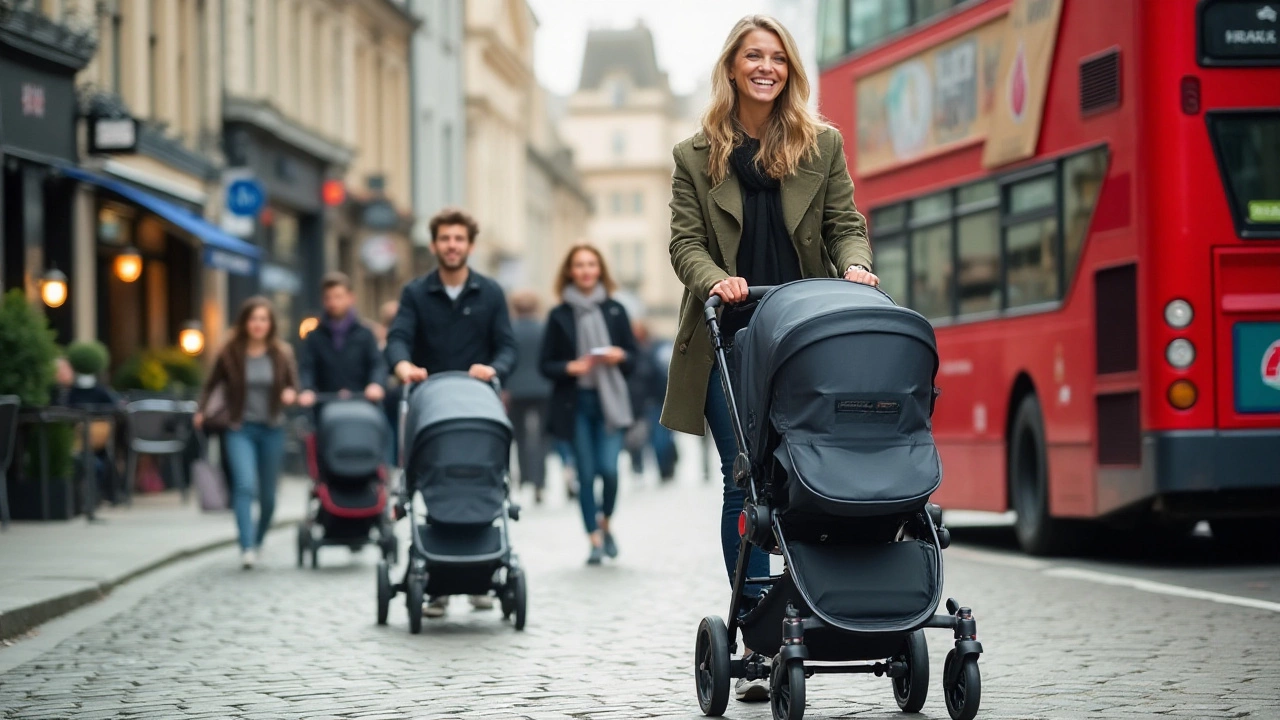
Comfort and Usability for You and Baby
When it comes to strollers, comfort isn't just about cushy seats and plush padding for the newborn; it's also about how easily the stroller adapts to your lifestyle. A critical factor in choosing a stroller is ensuring that it offers both the baby and the parent an enjoyable experience. Parents can look for adjustable handle heights, which are vital if you and your partner are of different heights, allowing for smoother steering without the backaches. While on your search, consider the padding of the seat and harness. A seat that reclines fully can be indispensable for naptimes, particularly for a newborn who will spend a considerable amount of time lying down. The five-point harness is standard in most strollers today, but be sure it is easy to adjust and fasten securely.
Storage is another point often overlooked until you're juggling grocery bags, baby gear, and your three-month-old at the park. A stroller with a spacious, easily accessible basket can be a lifesaver. Some models offer additional storage options, like cup holders and detachable storage bags. Look for the ease of folding the stroller too, as many parents find themselves needing to collapse a stroller with one hand while holding onto a baby with the other. A lightweight yet sturdy design can make all the difference.
As quoted by child development expert Alison Gopnik, "Being able to see and connect with their world in comfort is crucial for babies." This can translate into strollers with reversible seats allowing newborns to make eye contact with the parent or see the world around them, based on their developmental needs. Also, a sunshade that extends far enough to keep out the sun yet allows airflow is something to keep in mind, particularly if you live in a sunny area.
Do not forget about the stroller's suspension system, which can significantly influence how smoothly it glides over different surfaces. The quality of suspension and the type and size of the stroller's wheels impact how much your baby is likely to be jostled. Air-filled tires, while requiring maintenance, typically offer a smoother ride compared to plastic wheels, making them a top choice for long walks and varied terrains.
A stroller has to work for you as much as it works for your baby. Consider the pathways and the weather conditions you'll often navigate. Beyond features, the best way to gauge a stroller's usability and comfort is to take it for a test "walk" if possible. This way, you can be sure about how it maneuvers around tight corners and adjusts to your pushing stride. All these elements combine to ensure that choosing a baby stroller isn't just a practical purchase but an investment in peaceful, happy times with your little one.
Navigating Different Terrains with Ease
Bringing a newborn into this world is a journey on its own, filled with joy, wonder, and, admittedly, a few challenges. When it comes to choosing the right newborn stroller, understanding the kind of terrain you'll primarily be tackling can make a world of difference. Many parents find themselves unexpectedly venturing into varied environments, from smooth, urban streets to bumpy park paths. Each setting demands something different from a stroller, and knowing what to expect can help make strolls with your little one a pleasure rather than a chore.
For urban dwellers, the daily setting is often characterized by narrow sidewalks and bustling streets. Here, maneuverability is key. A lighter, more compact stroller with swivel wheels will suit these tight spaces, allowing you to weave through crowds effortlessly. Some strollers smartly combine compactness with durability, offering smooth rides on cobbled city streets. But don't let the compactness fool you; these models can often handle a surprising amount of gear in their spacious baskets, crucial for shopping trips with your baby stroller in tow.
Venturing off-road? Hiking trails or sandy beaches demand a different beast entirely. In these scenarios, a stroller with large, air-filled tires and a strong suspension system is invaluable. Consider models with lockable front wheels for stability on uneven ground. A sturdy frame might increase the weight, but the added comfort for your baby and peace of mind for you is well worth it. Always remember, a reliable harness system is non-negotiable for these adventures, ensuring your baby's safety against unexpected bumps.
Suburban life often offers a blend of the two worlds, where a versatile all-terrain stroller could be your go-to. These strollers expertly balance between the lightweight features needed for city life and the robustness required for more rugged landscapes. They typically feature adjustable handles, offering ergonomic comfort for parents of all heights. Plus, they often come with additional perks like sun canopies and rain covers to keep your newborn comfortable in any weather.
Choosing the right type of stroller for different environments can enhance not only the comfort of your baby but also your experience as a parent. As noted by BabyCenter, "A stroller is a very personal choice and you should consider not only the size and weight but also the ease of steering and handling."
Lastly, let's not forget the factor of ease when it comes to folding the stroller. Many parents find themselves needing to collapse the stroller quickly while juggling diaper bags and baby gear. Whether it’s a one-hand folding mechanism or a self-standing fold, these features can transform a potentially stressful situation into a seamless task. In this case, convenience meets comfort head-on, creating a pleasant outing for both parent and child, no matter where your adventures take you.
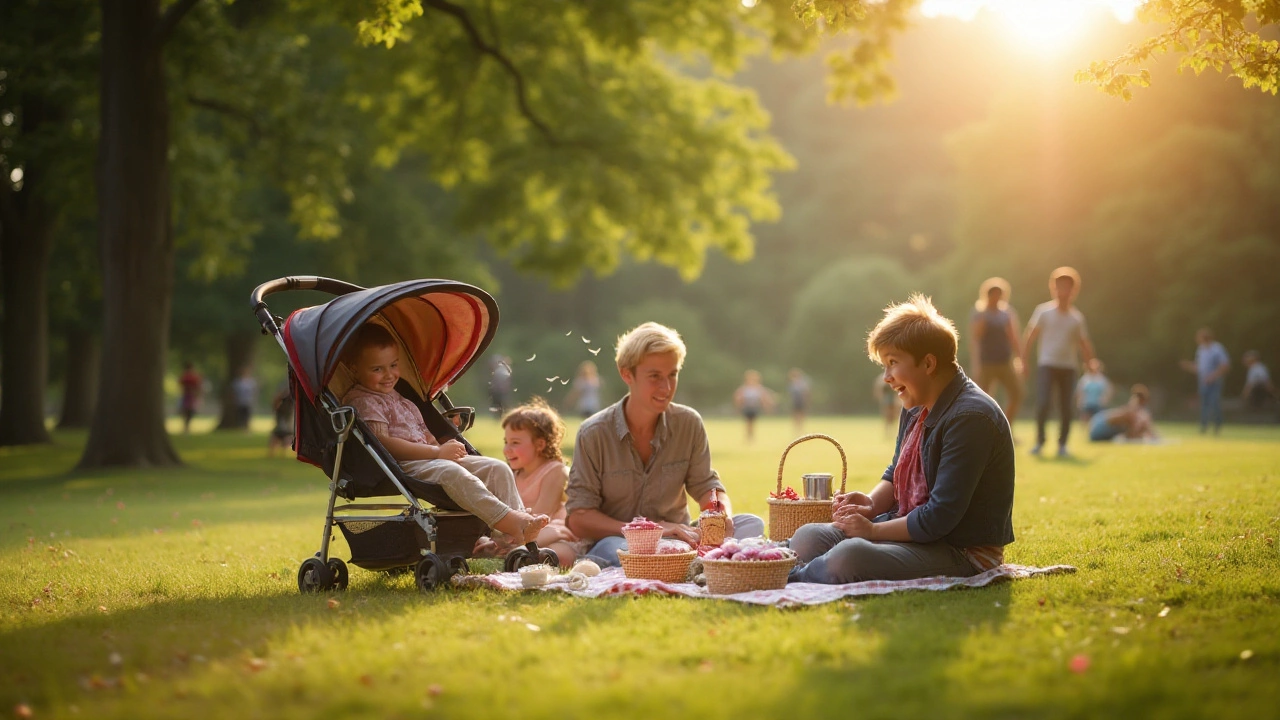
Top Tips for Making the Right Choice
Choosing the right newborn stroller can set you on the path to blissful outings with your baby. First, consider your lifestyle and the environments where you'll be strolling the most. If city living means tight spaces and lots of public transport, you'll want a lightweight and compact option with easy folding capabilities. The importance of maneuverability in bustling streets can't be overstated. For those often traversing less paved paths or parks, a stroller with larger wheels and durable suspension can offer the smooth experience you need. Always prioritize how the stroller fits your specific circumstances rather than the latest trends.
Another important aspect is ease of use. 'How convenient is it for me?' is a question often asked by new parents. You should focus on features that simplify daily tasks, like one-handed folding or adjustable handlebars, which can be crucial when you're juggling a baby and a coffee. Many parents find that reputable brands offer intuitive designs that naturally become extensions of their hands. According to a review by BabyCenter, "A stroller that folds easily and can fit into your car trunk without any intricate disassembly is worth its weight in gold." These thoughtful details can make those everyday errands a lot less taxing.
Safety always tops the list. Make sure the stroller's harness system suits your newborn's size but also adjusts as they grow. A five-point harness is often recommended for the security and peace of mind it provides. Ensure your chosen stroller meets or exceeds national safety standards, and don't shy away from giving it a test push at the store. Checking brake systems and the stability of a stroller is never overdoing it. Familiarize yourself with recalls and check for reports of past issues before purchasing. The Juvenile Products Manufacturers Association (JPMA) is a trusted certification resource for parents to look out for a useful mark of safety excellence.
Consider additional features that might enhance your outings. A large storage basket might be your best friend when you're laden down with baby essentials. Canopies for sun protection, peek-a-boo windows for checking on the little one, and parent trays for your caffeine fix can all contribute to a more functional stroller. But remember, more features can mean a higher price tag. We'd suggest creating a list of non-negotiables before stepping into a stroller mecca so that you stay focused on what truly matters.
Understanding the longevity of a stroller, especially for baby stroller models designed to grow with your child, can make a big difference in your decision. Opting for a convertible model might be a wise investment in the long run, allowing your child to transition from infant to toddler without the need for a new purchase. Such models usually offer the ability to switch from a bassinet to a seat, extending their usefulness significantly. Buyers need to weigh the initial investment against future savings. A table below highlights some popular models with their age ranges and price points:
| Model | Age Range | Average Price |
|---|---|---|
| Stroller A | 0-4 years | $300 |
| Stroller B | 0-3 years | $350 |
| Stroller C | 0-5 years | $400 |
